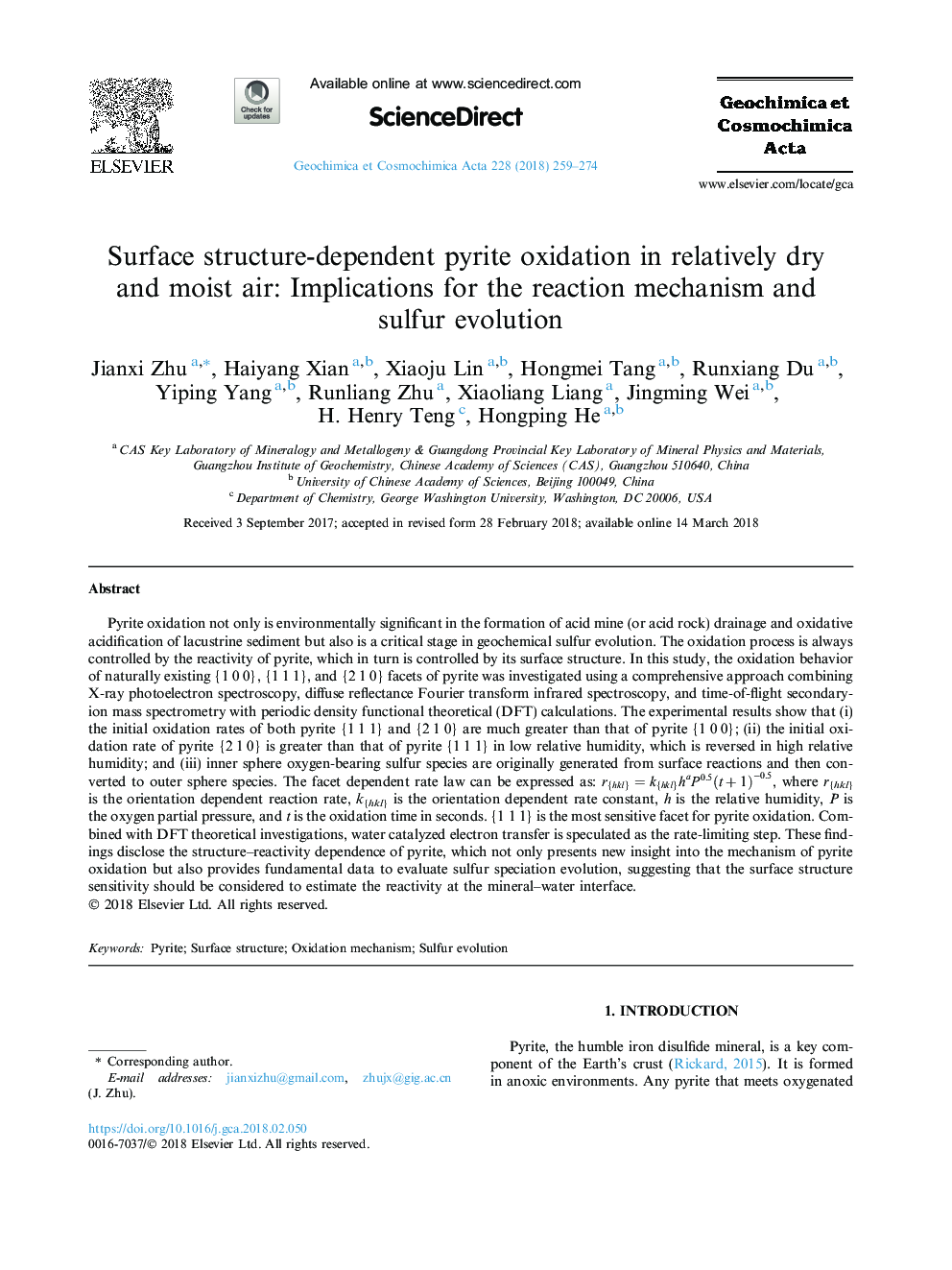| Article ID | Journal | Published Year | Pages | File Type |
|---|---|---|---|---|
| 8910796 | Geochimica et Cosmochimica Acta | 2018 | 16 Pages |
Abstract
Pyrite oxidation not only is environmentally significant in the formation of acid mine (or acid rock) drainage and oxidative acidification of lacustrine sediment but also is a critical stage in geochemical sulfur evolution. The oxidation process is always controlled by the reactivity of pyrite, which in turn is controlled by its surface structure. In this study, the oxidation behavior of naturally existing {1â¯0â¯0}, {1â¯1â¯1}, and {2â¯1â¯0} facets of pyrite was investigated using a comprehensive approach combining X-ray photoelectron spectroscopy, diffuse reflectance Fourier transform infrared spectroscopy, and time-of-flight secondary-ion mass spectrometry with periodic density functional theoretical (DFT) calculations. The experimental results show that (i) the initial oxidation rates of both pyrite {1â¯1â¯1} and {2â¯1â¯0} are much greater than that of pyrite {1â¯0â¯0}; (ii) the initial oxidation rate of pyrite {2â¯1â¯0} is greater than that of pyrite {1â¯1â¯1} in low relative humidity, which is reversed in high relative humidity; and (iii) inner sphere oxygen-bearing sulfur species are originally generated from surface reactions and then converted to outer sphere species. The facet dependent rate law can be expressed as: r{hkl}=k{hkl}haP0.5(t+1)-0.5, where r{hkl} is the orientation dependent reaction rate, k{hkl} is the orientation dependent rate constant, h is the relative humidity, P is the oxygen partial pressure, and t is the oxidation time in seconds. {1â¯1â¯1} is the most sensitive facet for pyrite oxidation. Combined with DFT theoretical investigations, water catalyzed electron transfer is speculated as the rate-limiting step. These findings disclose the structure-reactivity dependence of pyrite, which not only presents new insight into the mechanism of pyrite oxidation but also provides fundamental data to evaluate sulfur speciation evolution, suggesting that the surface structure sensitivity should be considered to estimate the reactivity at the mineral-water interface.
Related Topics
Physical Sciences and Engineering
Earth and Planetary Sciences
Geochemistry and Petrology
Authors
Jianxi Zhu, Haiyang Xian, Xiaoju Lin, Hongmei Tang, Runxiang Du, Yiping Yang, Runliang Zhu, Xiaoliang Liang, Jingming Wei, H. Henry Teng, Hongping He,
